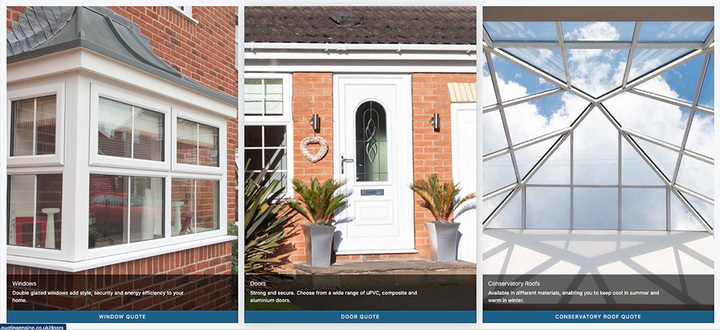
Aluminium versus uPVC is a classic debate when it comes to choosing window frames for your home. There are pros and cons to both materials, and it ultimately comes down to personal preference. However, it is worth considering the drawbacks of each material before making a decision.
First, let’s learn a little bit more about the applications behind both these popular materials.
uPVC or unplasticized polyvinyl chloride is a type of plastic. It is used in many different ways, most commonly in pipes and drainage systems. It is also used in windows and doors. uPVC is strong and durable, making it an ideal material for these applications. It is also easy to recycle.
uPVC was first developed in the early 1900s. It was initially used as an electrical insulator. In the 1930s, uPVC began to be used in pipes and drainage systems. It became increasingly popular in these applications due to its resistance to corrosion and its ability to be easily molded into different shapes.
In the 1950s, uPVC windows and doors began to be manufactured. uPVC is an ideal material for these products due to its strength, durability, and ease of maintenance. uPVC windows and doors are now a common sight in homes and commercial buildings.
uPVC is also recyclable. It can be melted down and reformed into new products. This makes uPVC an environmentally friendly material.
uPVC has a long history. It has been used for a variety of applications. It is strong, durable, and easy to recycle. uPVC is an ideal material for many different products.
Aluminium frames are known for being strong and durable. They are also low maintenance and easy to keep clean. However, they can be quite expensive, and they are not as good at insulating your home as uPVC frames.
uPVC frames are cheaper than aluminium frames, and they are better at insulating your home. However, they are not as strong or durable as aluminium frames, and they can become yellow and brittle over time.
While aluminum was used in the 19th century for making objects such as foils, teapots, and lampshades, its use increased rapidly in the 20th century with the development of new aluminum alloys. These alloys were used in many different products, including airplanes, automobiles, kitchen utensils, and packaging.
Windows made with aluminum frames were introduced in the 1930s. These windows were popular because they were strong and durable, and they could be made with very thin frames. Aluminum windows became even more popular in the 1950s and 1960s, when architects began using them in office buildings and other commercial structures.
Today, aluminum windows are widely used in both commercial and residential buildings. They are available in a variety of styles, including casement, awning, single-hung, and double-hung.
There are a few key reasons why aluminium is often seen as a more beneficial window and door frame material than uPVC. One of the most significant advantages of aluminium is that it is much more durable than uPVC, meaning that it will not warp, fade or become discoloured over time. Aluminium is also a lot stronger than uPVC, meaning that it can better withstand impacts, making it ideal for areas that see a lot of foot traffic or for properties in high-wind areas. Finally, aluminium is a much more environmentally-friendly material than uPVC as it can be recycled over and over again without losing any of its properties, whereas uPVC can only be recycled a handful of times before it becomes unusable.
When it comes to the benefits of uPVC, the most commonly cited advantage is that it is a lot cheaper than aluminium. uPVC is also a lot easier to work with than aluminium, meaning that it can be cut and shaped to fit any window or door frame much more easily. uPVC is also a lot more thermally-efficient than aluminium, meaning that it will help to keep your home warm in winter and cool in summer. However, uPVC does have a few drawbacks, such as the fact that it is not as durable as aluminium and it can also start to warp, fade and discolour over time.
There are many factors that customers should consider before choosing between aluminium windows and uPVC windows for their house. The most important factor is the price. Aluminium windows are more expensive than uPVC windows. customers should also consider the installation cost. Aluminium windows are more difficult to install than uPVC windows. The warranty is another factor to consider. Aluminium windows usually have a longer warranty than uPVC windows.
If customers are looking for the most energy efficient and durable window, then they should choose aluminium windows. If customers are looking for the most affordable window, then they should choose uPVC windows.
